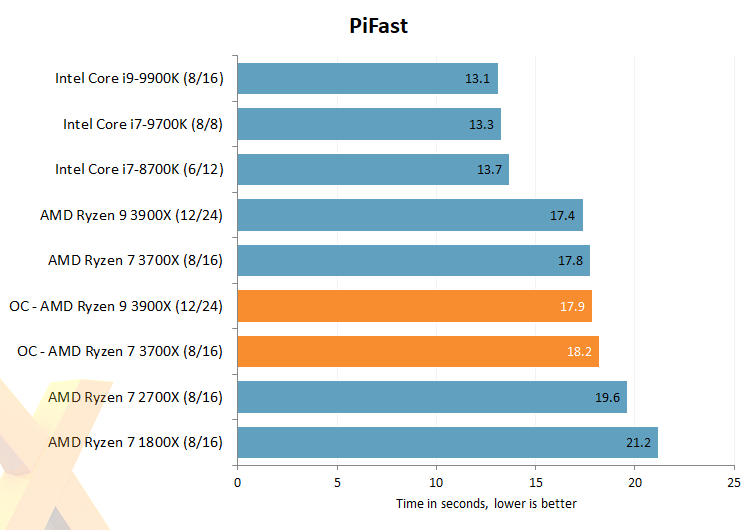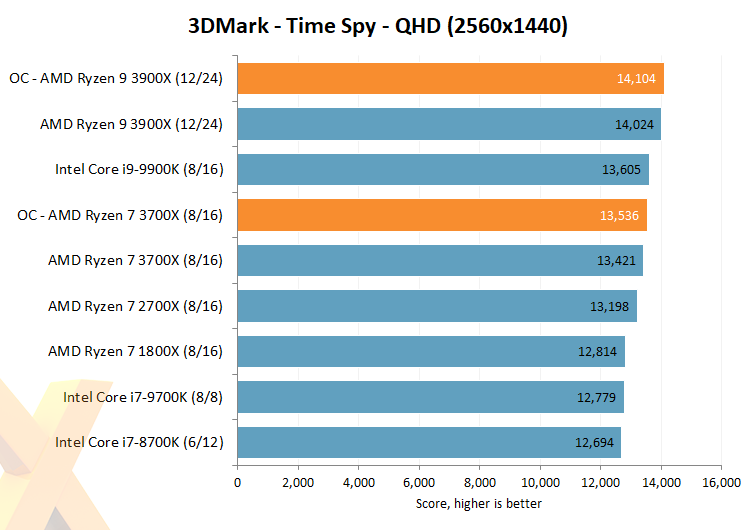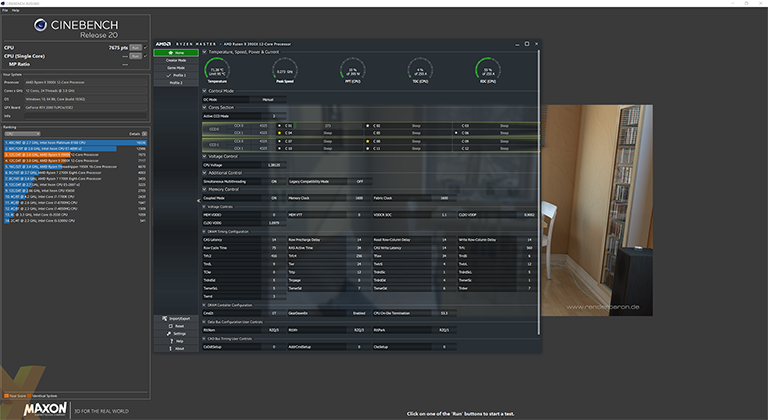Overclocking
You can overclock Ryzen CPUs in myriad ways. There's Precision Boost Overdrive (PBO), built into Ryzen Master, that enables the CPU to pull more power from a motherboard's VRMs, enabling potentially higher frequencies. New on the Ryzen 3000-series and X570 chipset combo is the ability to set a higher frequency curve.
Even so, during our testing, activating PBO increased overall performance by less than three per cent whilst pulling an extra 28W of power. We found that manually increasing the core frequency to be better. Keeping it simple, we increased the all-core frequency in conjunction with a slightly-higher-than-default power of 1.38125V.
The upshot is that the Ryzen 9 3900X maintained an all-core speed of 4.325GHz, stable for at least 15 minutes, while the Ryzen 7 3700X scaled less well, to 4.25GHz across all 16 threads.

So how come the overclocked chips are slower? That's because we use the same all-core frequency. You can manually set each core at a different speed, of course, but each application has varying tolerance levels to per-core frequencies.

Yet there's still benefit to ramping up the cores, which makes more sense for heavily-threaded applications.

And there's a bit extra in the tank for gaming. Running normal games shows that AMD then becomes practically on-par with stock Intel 9th Gen parts at the FHD resolution.
Regarding memory overclocking, we bust out our fastest pack of G.Skill memory, rated at 4,000MHz. That set was able to run at 4,200MHz at CL18 latencies with 1.45V, highlighting that AMD has made strides in improving the frequency potential of the controller. Bear in mind, however, that the Infinity Fabric link, between the I/O block and CPU cores, runs at slower speeds when the memory controller operates in excess of 3,733MHz, therefore reducing the overall performance effect of super-fast memory.










